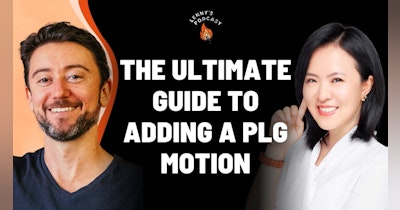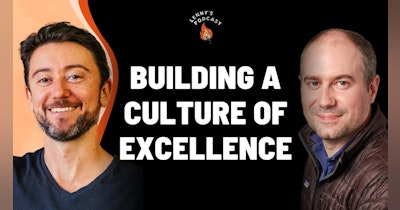Madhavan Ramanujam is a senior partner at Simon-Kucher, leading pricing strategy consultants, and works with Uber, Asana, and LinkedIn to help them develop their pricing and monetization strategies.
Madhavan studied quantitative modeling at Stanford. He is the author of the most widely read book on pricing strategy, Monetizing Innovation.
You can also see the episode transcript and Madhavan’s references.
Key takeaways
- Just like a liter is a measure of volume, price is a measure of value (not just a dollar figure).
- A lot of companies use a spray-and-pray approach to product-market pricing; his benchmark is that 72% of early-stage startups fail because of this.
- Pricing is a cross-functional discipline, and he believes it’s a product-led problem to solve now (hence relevant for Lenny’s audience).
- PMs cannot prioritize a roadmap based without a willingness-to-pay conversation. (Madhavan hopes this can be the key takeaway!)
- Price low to gain growth is a fallacy (unless the business model allows for it).
- Thinking about how you charge is more important than how much you charge, e.g. annual vs. subscription, usage vs. not; ask your customers.
- For the current market downturn, consider a less-expensive pricing option to reduce churn as a back-pocket alternative, or think about other benefits or contract timelines, or payment terms for the existing pricing plan. The worst thing to do is just and only drop the price.
What is “willingness to pay” (WTP)? ▶
- Product-market fit is well known, but not product-market-pricing fit. You hear what you want to hear from customers if you don’t include pricing in conversations. WTP is a proxy if customers value your product, or how badly they want it.
- He encourages startups to have these conversations as early (there is no “way too early”) as when they are at product discovery. Related: “It’s Price Before Product, Period,” from First Round Capital, e.g. Porsche built their SUV (Cayenne) around customer feedback (need of cupholder) and willingness to pay, even before a blueprint of the car was done.
How do I get signal about WTP? ▶
- Don’t ask “How much should I charge for this product?” for starters. :)
- Frame the questions relatively, e.g. if you are a B2B SAAS company, if Salesforce is indexed at $X in value, how much do you think we should be?
- Then ask about acceptable price, expensive price, and prohibitively expensive price progressively to get a sense of psychological thresholds. Acceptable prices are where customers end up happy, expensive prices are where they are not unhappy, and prohibitively expensive is where they are laughing at you. Rahul Vohra of Superhuman used this to nail the $30 pricing.
- For a certain price, you can ask for a spectrum of won’t pay to willing to pay (1 to 5) with customers to get a sense of WTP. In reality, the folks who answered 5 are the ones who would pay but for lesser than that asked price.
- Ask users with your set of features which they would prioritize most and least, both of which are in the extremes, which you will get a good signal for (the messy middle is hard for them). Rinse and repeat with a different set of features (6 is an ideal number).
- Conversations just about WTP don’t work; you’ll have to match it with the user pain points (benefits) and the solution you bring, before talking about WTP.
- Revisiting price: Every 6 months, pause and think; 12-18 months given the market cycles or a pivot will necessitate the need for revisiting pricing.
Customer segmentation ▶
- Most startups get this wrong, where segments are based on just persona. Segmentation starts from needs to then user personas who match said similar needs, to then product and pricing. It’s not a product or solution being positioned to a certain group of personas, e.g. water can be free in a fountain, $2 for a bottle, $2.50 with gas, while in a minibar it is $5, because the needs of the user are in context, i.e. one size does not fit all.
- When to think about segmentation? As a first WTP conversation, ask yourselves can we productize to this type of users (segment) first? This means sizing the segment and the pain of that segment first, before unlocking other segments (which can happen with packaging or bundling).
- Examples of segmentation done well:
- Apple has an iPhone for 299, 399, 599, 799 (similar) based on segments, where they have productized it first to different needs.
- Eventbrite, as a B2B events app. An entry-level plan has only one ticket type for an event, unlike the more expensive plans, and nailed this strategy with WTP conversations.
- Uber with different car types (want to work in the car, or want to get to my destination in the cheapest way possible), and therefore price is based on WTP.
4. Bundling to unlock segmentation:
- Filler, e.g. McDonald’s Big Mac Happy Meal. Here fillers are Coke and french fries that are add-ons for an extra couple dollars.
- Killer, e.g. coffee along with french fries and burger (not for everyone), so you put this as an add-on/standalone (not part of bundling, as it reduces WTP).
Pricing strategies ▶
Interestingly, there are only 3 types of pricing strategies—maximizing, penetrating, and skimming:
- Skimming: Like Apple iPhone, launch at a price and then the next generations with a lower price, hence skimming the market.
- Penetration: Like Amazon, operating at thin/low margins, playing a volume game.
- Maximizing: Like Microsoft, neither in the above two extremes, looking to slowly get more market share.
Behavioral pricing ▶
Helps you sell at a higher price without changing any of your products, tapping into users’ irrational mode of customer decision-making. Related: Predictably Irrational by Dan Ariely. Some examples:
- Decoy: Have a pricing tier that’s at the higher end of the expensive price range that moves more users into the acceptable price tier, improving conversion rate. An inverse: While buying popcorn, say, a small popcorn is $7 and the huge popcorn is $8. Customers would unknowingly justify the worth of the big popcorn. But if the $7 popcorn did not exist, then the conversation would be “Is the $8 popcorn worth it?”
- Razor vs. razor blade model: The initial product is cheap, though the usage of the product with utility increases, where there is scrutiny on the upfront cost for FMCG products, e.g. printer cartridges.
- Annual pricing plan: Portraying the monthly price for the annual plan in comparison to the standalone monthly plan for subscriptions helps consumers have an easy comparison and see the added value if they see long-term usage value.
This is a human edited summary of the podcast episode with Madhavan, by Gaurav Chandrashekar (@cggaurav, productscale.xyz). To listen to the full episode, go here.








